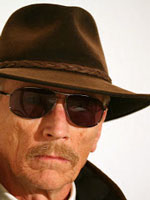
I have been looking for it, in the blues and jazz clubs of Europe and in churches and holy places as well. The following is the opposite of a scientific ISO comparison of the Nikon D800(E) and its nearest competitor, the Canon 5D Mark III.
DxOMark has already done what you could call a scientific comparison, while a number of more intuitively based photographers have expressed their disbeliefs in DxOMark’s finding that the Nikon D800(E) is not only the king of image quality but the king of ISO as well.
I have to agree with both for the following reasons:
When it comes to the simple question of which camera produces less noise at a given camera ISO setting, I believe that the disbelievers are right. For a given camera ISO setting there are cameras out there that produce a marginally cleaner image than the Nikon D800. One of these is the Canon 5D Mark III. The reason is simple and based on the fact that a larger pixel has the opportunity to capture more photons, thereby reducing the effect of the inherent electrical noise of the pixel itself and its up-streams amplifiers.
However, there is another important difference between the image sensor of the Nikon and, for example, the Canon. The Nikon sensor has a remarkable ability to recover details hidden in underexposed areas. The difference in this area is truly remarkable and by far exceeds the marginal difference in noise found in ISO to ISO comparisons.
The consequence is that I shoot the D800 at a lower ISO setting than I would the 5D Mark III and that I end up with noticeable less noise even after pulling up the D800 shadow areas past any straight ISO comparison.
Furthermore, any eventual noise is of course of a finer pitch and thereby somewhat less objectionable. Not to mention the noise reduction possibilities offered by Topaz and others.
Now, before I sound like a total Nikon commercial, let me switch tracks and tell you the rest of my story. Nikon makes fine fixed focal length primes and a fine high resolution camera, the D800(E).
Conventional wisdom tells us that this makes for an excellent setup for landscape and studio. I would go one step further and say that is makes the ideal setup for general photography requiring focal lengths from 14mm to 85mm using for example Nikon’s own 24mm, 28mm and 85mm lenses.
However Canon takes the prize when it comes to zoom lenses; 70mm to 200mm, 100mm to 400mm and up. This couples very well with the fast, robust and low noise Canon 5D Mark III.
This is why my on-duty setup consists of a Nikon D800E with the 14mm, 24mm, 28mm or 85mm prime lens and a Canon 5D Mark III with a 70-200mm or 100-400mm zoom lens.
I believe this gives me the best of both worlds.
Some might object to the learning and mixing of two different systems. Personally I do not mind it considering that I feel it gives me the ultimate results, as well as access to both the speed and simplicity of the Canon and the extra detail, depth and customization of the Nikon.


